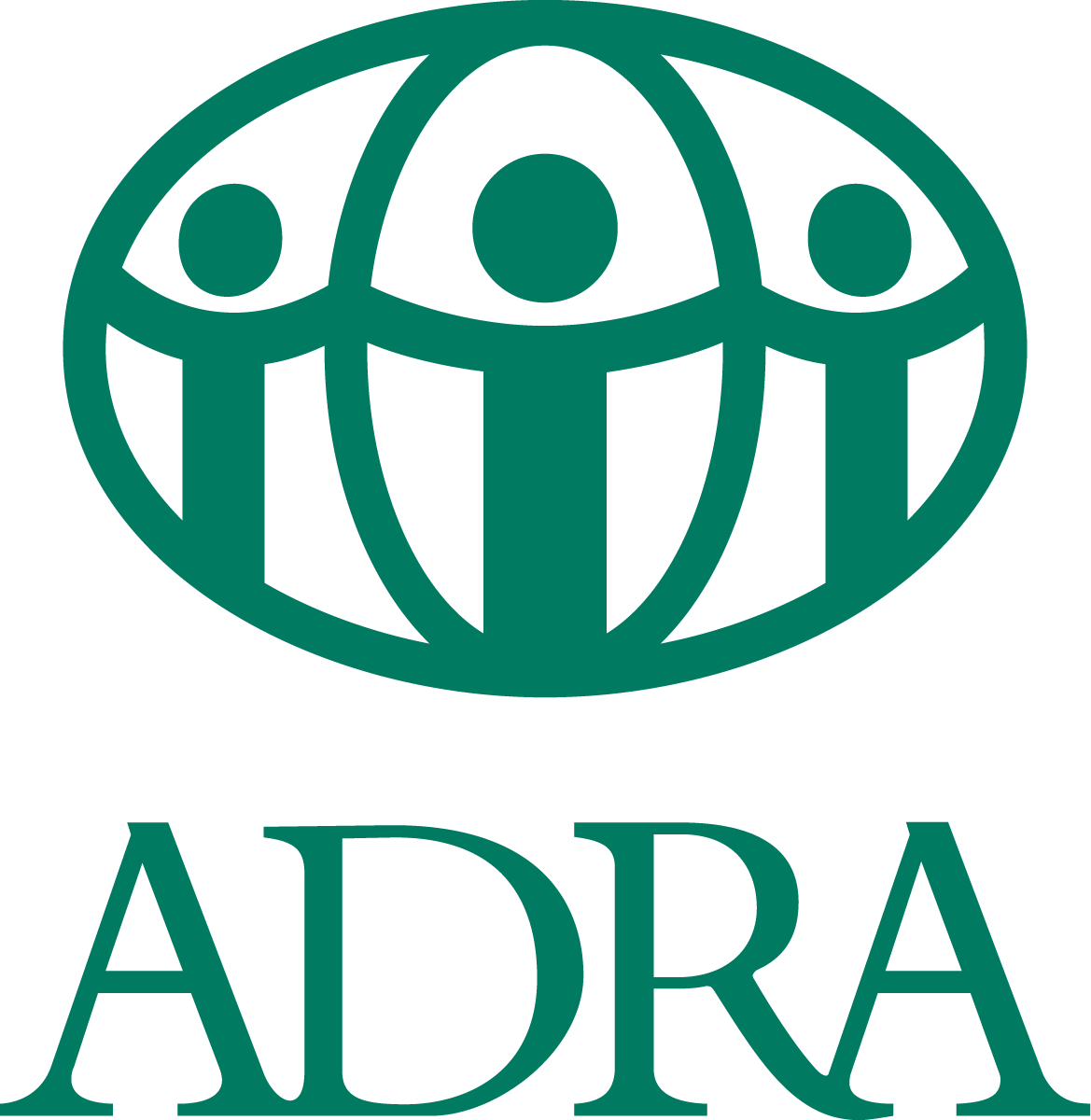World Environment Day 2024 focused on land restoration, halting desertification and building drought resilience under the slogan “Our land. Our future. We are #GenerationRestoration.”
The beneficiaries and project participants in our livelihood projects are mostly subsistence farmers for whom reduced rainfall, drought, and land degradation directly result in low crop yields, less food on their plates, and less money in their pockets.
As we saw in our previous EU-funded LIRIC project, when we can reclaim land and enable it to be productive again, it provides a powerful asset for landless and low-income families.
In our current GOAL II, RELIEF, and Samvardhan Projects we are using Climate Field Schools to teach various drought/climate change adaptive techniques like drip irrigation, mulching, integrated pest management, adoption of drought tolerant crop varieties, the use of organic fertilizers, adopting improved farming practices and water-use efficient technologies like multiple use water systems and recharge ponds. Climate change adaptive technologies and practices are now essential for families who rely on agriculture as the major source of their livelihood.
We marked World Environment Day with communities in our project areas:
Samvardhan Project celebrated World Environment Day at Shree Nepal Secondary School, Madhuwan-3, Bardiya, under the inspiring slogan, “Our Land. Our Future. We are #GenerationRestoration.” The day commenced with a vibrant rally, filling the school area with energetic chants and slogans advocating for environmental preservation. This was followed by an engaging quiz competition among students, focusing on the critical intersections of environment and health and the day concluded with a keynote speech and plantation activity around the school area reinforcing our commitment to environmental stewardship. Thanks to Shree Nepal Rastriya Secondary School’s dedicated teachers, enthusiastic students, and supportive staff, along with FECOFUN chapters, local government representatives, the Forest Department, FUGs, our entire Samvardhan team, and all the helping hands who contributed to making this day a true celebration to our collective dedication to the environment. Samvardhan Project is funded by the EU, Austrian Development Cooperation, and ADRA Austria.
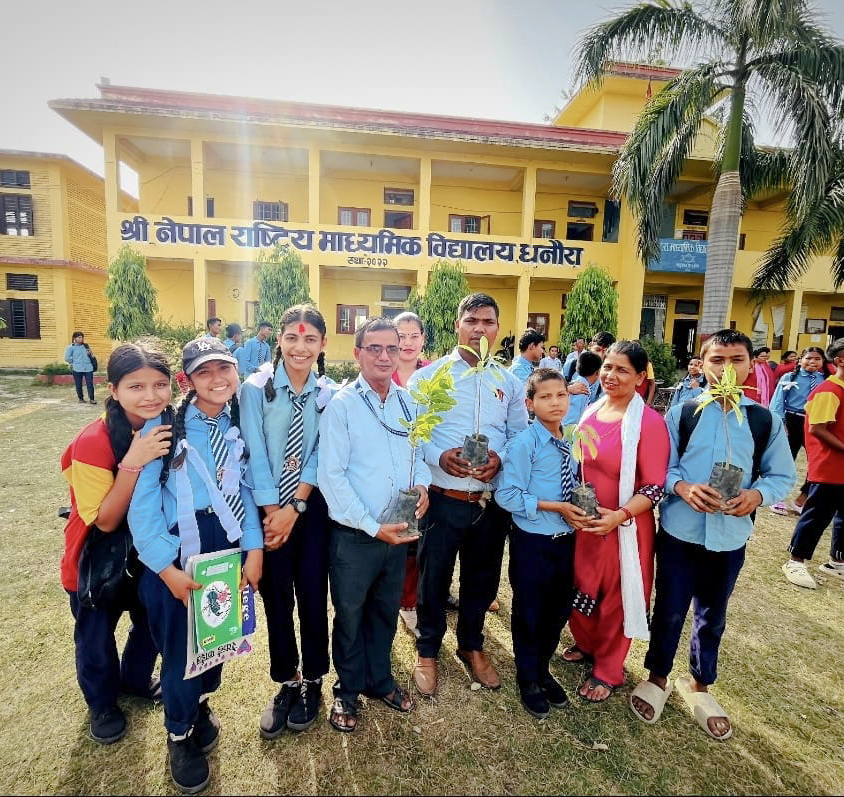
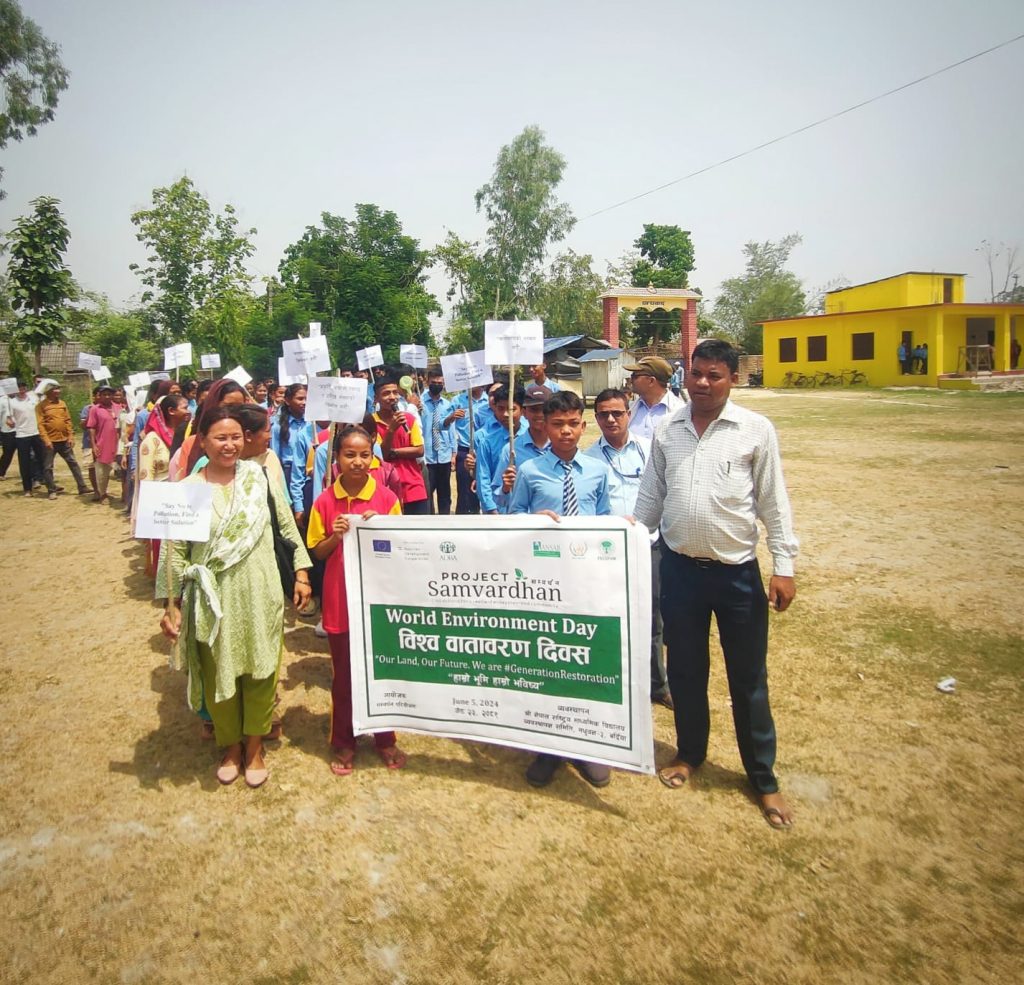

GOAL-II project organized an awareness session on environmental conservation and fighting against drought in Rolpa and Pyuthan where the project is being implemented. Farmer group members, community forest user group members, local leaders, and local government representatives participated in the orientation session facilitated by the project staff through interactive discussions. The objective was to sensitize the community on protecting the environment from pollution (fire, chemicals, plastics) and deforestation). GOAL II is funded by the Government of Australia and ADRA Australia.
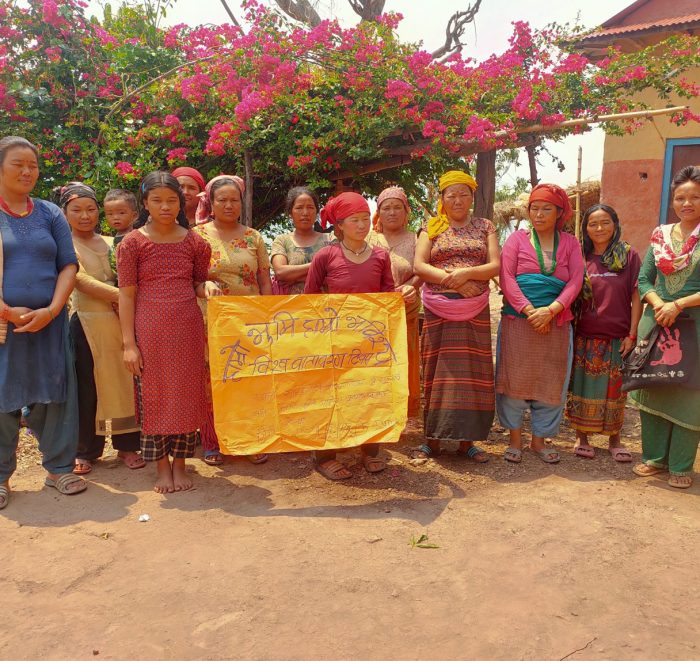

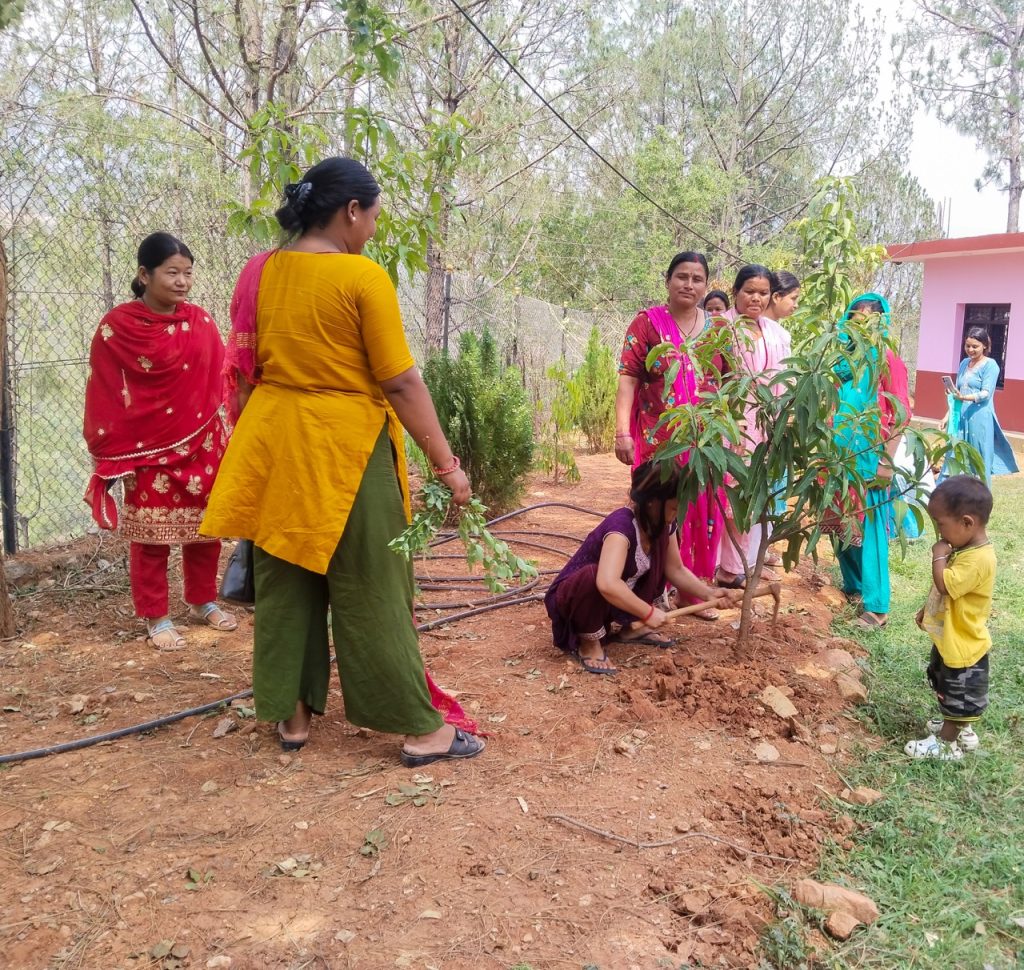
The RELIEF Project collaborated with rural municipalities to organize an inter-school speech competition in Gangajamuna and Khaniyabas Rural Municipalities in Dhading where the project is being implemented.
In Gangajamuna RM, the topic for the speech competition was “Student’s Role in Environmental Protection”. Students from eight different schools participated in the event and delivered a speech on the theme. In Khaniyabas RM, theme was “Climate Change and Our Future”. There were 16 girls participating in the program out of 21 in total. All the students in their speech,expressed concerns about recent trends in climate change, its impact and environmental issues, and how they can play a crucial role in improving the natural environment while protecting it.
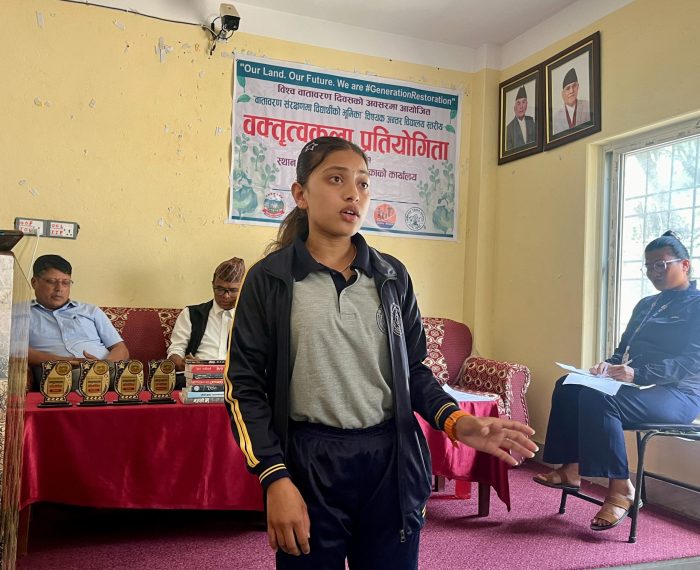
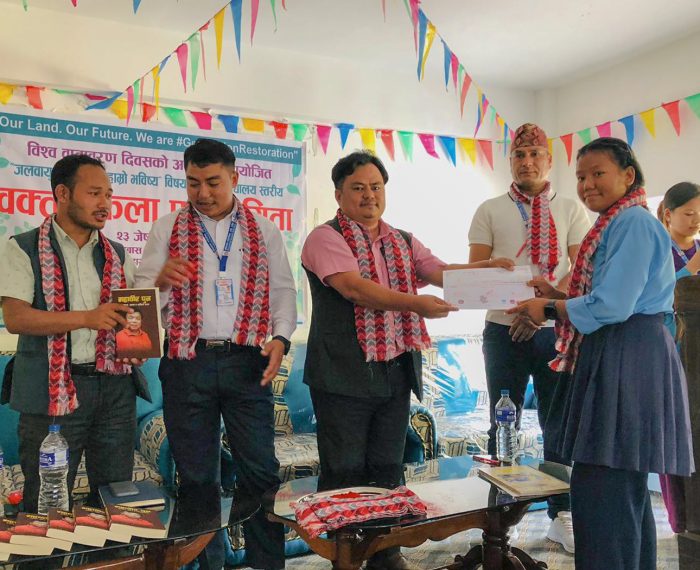
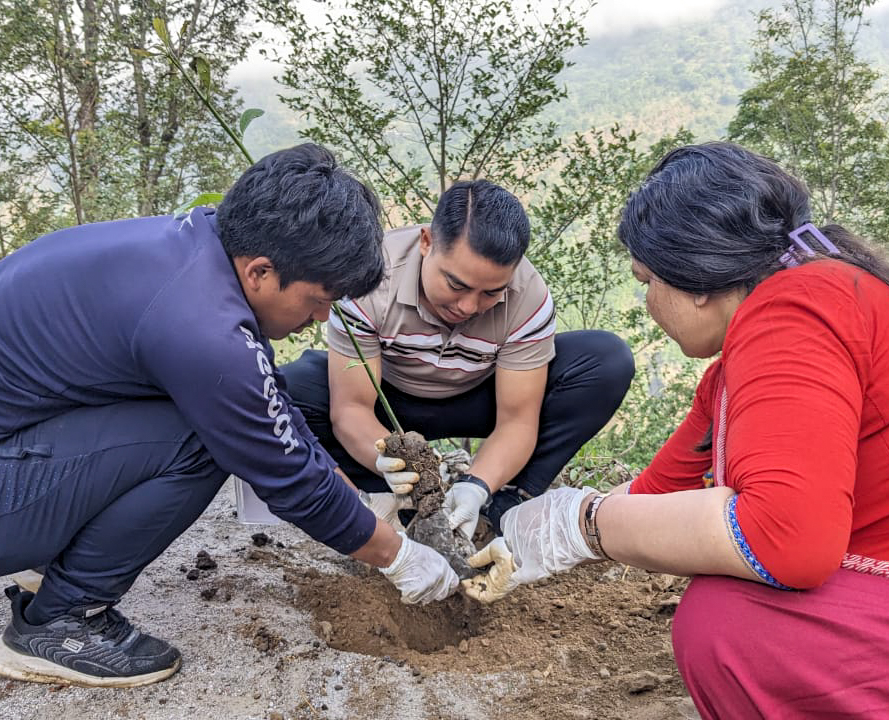
Besides the speech competition, the RELIEF project and the Khaniyabas Rural Municipality also collaborated on a cleanliness and tree plantation program in the degraded and marginal lands around the community. The event had participation from ward representatives, students, teachers, municipal departments, and community members. The RELIEF Project is implemented in partnership with PRAYAS Nepal with the financial support of Canadian Foodgrains Bank (CFGB) and ADRA Canada.
FACTS: www.worldenvironmentday.global
The disappearance of once-productive land is having a devastating effect on the least fortunate.
- Land degradation affects 2 billion people, or 40 percent of the world’s population. It disproportionately harms those who are least equipped to cope: rural communities, smallholder farmers and the poor.
- Land degradation could reduce global food productivity by 12 percent, causing food prices to soar by up to 30 per cent by 2040.
- By 2030, drought, land degradation and desertification could force 135 million people to migrate as the climate crisis worsens. Land degradation threatens human rights to life, health, food, water and a healthy environment.
- Young people are part of a growing category of involuntary migrants called ‘environmentally displaced people’ as environmental degradation fuelled by climate change forces them to migrate due to inability to make a decent living from their land.
In fragile contexts, land degradation can fuel conflict and violence due to displacement and competition over scarce resources between different communal groups such as farmers and herders.
